Every cooking technique can be done poorly. Meals can be ruined in any number of ways but the worse is when food spoils and illness ensues. Sous Vide cooking slowly raises the internal temperature of food, until it reaches it desired serving temperature. The “slowly” is where risks incur but with proper care and mindfulness, every meal cooked in a low temperature water bath can be both delicious and safe.
There are risks lurking in uncooked food. For people with immune systems that are compromised, the threats are even higher. Micro-organisms and spores must be sterilized during the cooking process. Vegetable pathogens and other assorted “cooties” must be pasteurized and rendered harmless. Things spoil, both before cooking and after. The only flavor surface microbes add to a meal is the taste of danger.
Proper food handling and Sous Vide cooking techniques can negate all of these risks. Knowledge combined with mindful effort promotes food safety. Also, make sure to invest in high-quality best sous vide machine. It also pays off in unique amazing meals.
Why Sous Vide is Safe
Microbes can multiply and spoil food, especially meat. With prompt and consistent refrigeration the danger can be minimized during a pre-cooking stage. With Sous Vide cooking, the danger comes while the meat is being cooked. As low temperature water circulates, the heat is transferred through the bag and slowly raises the internal temperature of the meat.
Microbes can grow from between 40 F to 140 F. Safe practices required that you heat the meat to at least 150 F, as quickly as possible. However, sous vide cooking is a bit different due to the cooking method’s use of time.
Sous vide cooking a portion size piece has the internal temperature rise fast enough and the time spent in the danger zone is minimized. If the piece of meat is large, there may be portions of the meat that will take hours to reach safe levels. That risk can be avoid by simply dividing the meat into sensible, portion controlled sizes.
To further cut the risk of microbial issues, searing the meat with a torch is a common sense first step. This time in a skillet or under a broiler can be done before and after time spent in the water bath. Pre-searing kills the surface microbes making Sous Vide food safer and also more delicious. Searing before locks flavor compounds into the meat. During the longer cooking time these flavors penetrate throughout the cut.
For fish pre-searing is also recommended but for lamb it is discouraged. Searing this type of meat produces a terrible flavor, which will permeate the entire lamb during the slow cooking.
For lamb and all other types of meat, searing is recommended just prior to being served. This is mostly for esthetic reasons. Everyone loves seeing a crisp finish on a cooked piece of meat.
Blanching food before cooking Sous Vide is also advised, if searing is not desired. A two second dip into boiling water will kill the bacteria on the surface of the food. For fruits and vegetables it is even more advantageous to blanch. The color and texture of these will be preserved and the enzymes associated with browning will be neutralized.
Pasteurization is another big element in food safety,
What is Pasteurization?
And Why is Pasteurization important for Sous Vide?
Pasteurization was actually created as a method of enabling milk to last longer. Since then, we have pasteurized many more types of food.
Pasteurization is when food is treated with a high temperature for a short period of time. By doing so, bacteria is destroyed, and the consistency of the food stays the same.
By using a sous vide, in many cases, depending on the food and temperature, we are actually accomplishing a lower level of pasteurization of the food, killing bacteria. Obviously, this does not mean everything is 100% safe, but it definitely helps.
The food “temperature danger zone” is between roughly 40 and 135 degrees Fahrenheit, so we just need to ensure we stay above that 135 degrees in most cases.
Is Sous Vide Plastic Safe?
Cooking in plastic is safe but it leaves some with a “bad taste” in their mouth. Some water bottles and other food related items contain a plasticizer called Bisphenol A, commonly known as BPA. Concerns have surfaced on how this chemical is leached into the water and can be cancer causing. BPA is not normally found in the cooking bags usually used in Sous Vide cooking. There are some polycarbonate containers on the market that tout their reusability but traditional Sous Vide methods call for bags. It is doubly wise to avoid these cooking containers if you are sensitive to the BPA issue.
PVC is another type of plastic commonly used. Polyvinyl Chloride is a kitchen wrap and while normally used safely in food storage it also offers good heat, vapor and moisture resistance. There have been some studies associating this type of plastic with tumors in rats but no evidence exists for harmful effects in humans.
When selecting the type of plastic sous vide bag to use in a vacuum sealer, polyethylene seems the best. Ziploc bags are made out of this material and it offers a better gas barrier and is well suited to low heat cooking techniques. The bags themselves are a good choice, even without the vacuum sealer for with the proper technique, the majority of the air can be squeezed out before Sous Vide cooking.
The thicker freezers Ziploc bags are suggested is going without a best sous vide vacuum sealer is the choice. They not only are prefect for the cooking stage but also for storage and eventual reheating in a microwave.
Is Sous Vide Safe for Pregnancy?
As long as we follow the steps outlined above regarding the food danger zone, and using the correct plastic, it should be no less safe for pregnancy. In fact, pregnancy is a great time to be using a Sous Vide machine, because of how easy it is!
Sous Vide is as safe as any other style of food preparation; actually better. The chance of burning yourself on an open flame is null, while the chance of eating a great meal is greatly multiplied.

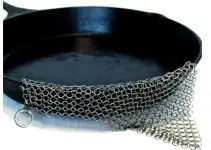
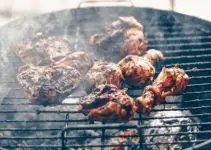
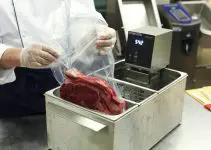
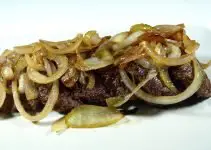
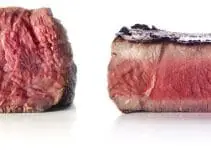
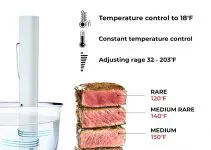
Ziploc bags have always been my go to plastic bag of choice when cooking with the sous vide method! They’ve always been great and the deep freeze storage option is a huge plus!
Sorry Joe, there’s some inaccuracy to the food safety portion here. Sous vide does not have to be cooked to 150F to be safe. Sous vide functions as a pasteurizer – killing bacteria with TIME and not temperature.
For example, the FDA recommends cooking chicken breast meat (which is comprised of 5 percent fat) to 165°F/74°C in order to pasteurize it. When the center of the meat reaches that temperature, virtually 100 percent of Salmonella is killed immediately. When brought to 160°F/71°C, it takes 14 seconds to kill the Salmonella. At 155°F/68°C, it takes 50 seconds. At 150°F/65.5°C, my favorite temperature for chicken, it takes 3 minutes. I don’t recommend cooking chicken at 136°F/58°C—it’s a little more like chicken sashimi, really—but you can. It will just take 69 minutes at that temperature to be safe.
This pasteurization is why you can cook steak at 129F and have it be completely risk-free to eat.
Thanks for the comment, Caleb. You’re very much correct – I’ll revise the article shortly.
Thank you so much for eliminating the fear just put into me. Good to know hard…true…facts!
My concern relates to quantity. Cooking two pounds of chicken cutlets to use in a recipe and the only guides I see are for 2 chicken breasts….? I find most recipes are for two people. Does this mean if you are serving 4-8 you need additional machines?
Not at all. I routinely cook 5 pounds of chicken at one time. As long as the cooking pot is large enough so the food isn’t touching each other and water can circulate around it, you’re good to go. A sous vide rack is a good way to keep lots of food separated in your pot.